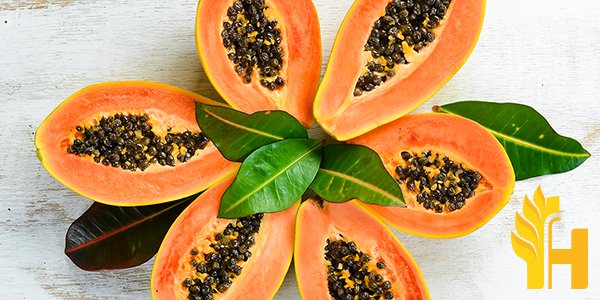Pawpaw price

Where to buy and sell Pawpaw, lowest (cheapest) and highest price.
check offers buy sell PawpawToday price for PawpawPawpaw wholesale prices 2022
The Current commodity price of Pawpaw per kg, pound in the world in the global markets
pawpaw catty
Price range: 5 - 5.5 CNY / 0,60 kg | Market: suzhou nanhuan bridge market | Date: 2025-12-04
pawpaw catty
Price range: 5 - 5.5 CNY / 0,60 kg | Market: suzhou nanhuan bridge market | Date: 2025-12-01
pawpaw catty
Price range: 5 - 6 CNY / 0,60 kg | Market: suzhou nanhuan bridge market | Date: 2025-11-27
pawpaw catty
Price range: 5 - 6 CNY / 0,60 kg | Market: suzhou nanhuan bridge market | Date: 2025-11-24
pawpaw catty
Price range: 5 - 6 CNY / 0,60 kg | Market: suzhou nanhuan bridge market | Date: 2025-11-20
pawpaw catty
Price range: 5 - 6 CNY / 0,60 kg | Market: suzhou nanhuan bridge market | Date: 2025-11-17
pawpaw catty
Price range: 5 - 5.5 CNY / 0,60 kg | Market: suzhou nanhuan bridge market | Date: 2025-11-13
pawpaw catty
Price range: 5 - 5.5 CNY / 0,60 kg | Market: suzhou nanhuan bridge market | Date: 2025-11-10
pawpaw catty
Price range: 5 - 5.5 CNY / 0,60 kg | Market: suzhou nanhuan bridge market | Date: 2025-11-06
Pawpaw
Pawpaws are the native fruit of the United States, and they're delicious. The only reason why most people don't know that is that pawpaws simply aren't commercially available where they live or it's not available year-round where they live. This is a shame because the pawpaw is one of our best-kept secrets as a nation. It has a flavor that is difficult to describe, with hints of tropical fruits like mango and banana. Pawpaws are not the easiest fruit to find either. They're not available in supermarkets—at least not yet! If you want to get your paws on some pawpaws, you have to go where they grow or find a farmer who will sell them to you. Very few grocery stores carry them. The best way to propagate pawpaw (Asimina triloba) is by seed, which should be either stratified or scarified before planting. Pawpaws are unusual in that they produce seeds without being pollinated; thus, no other tree can serve as a pollen source. The easiest method of propagation is also the least reliable: collecting the fruit, allowing it to rot for several weeks, and then planting it. This method produces very few plants that will germinate. The most reliable method of propagating pawpaws is similar to the natural propagation technique employed by this species in nature. You can collect fresh fruit, which has a low percentage of viable seeds. Place the fruit in a bucket of water and allow it to ferment for about two weeks. Then separate the pulp from the seed, mix the seed with a loose medium such as sand or perlite, and plant them where you want them to grow. Pawpaws are usually relatively easy to grow. They don't require heavy fertilization, and they can tolerate acid soils. Like other members of the Annonaceae family, pawpaws have unusual roots: they form multiple adventitious shoots at the base of their stems that will produce roots while still attached to the parent plant. These "suckers" can be separated and transplanted with some success. Pawpaws are susceptible to many of the same pests and diseases that afflict common fruit trees, including aphids, scale insects, borers, cankers, scab, powdery mildew (a fungus), verticillium wilt (a fungal disease), and others.Global pawpaw production
Pawpaw is a tropical fruit that is native to the American continent. It is one of the largest fruits in the world and can weigh up to two pounds. The fruit has a sweet taste and is often used in desserts or as a snack. Pawpaw production occurs mainly in Latin America and the Caribbean, as well as in some parts of Africa. The fruit is grown on large plantations, where it is harvested by hand. The pawpaw tree is a tall, slender tree that can reach up to 30 feet in height. The fruit of the pawpaw tree is a large, greenish-yellow melon. It has a smooth, yellow flesh that is sweet and juicy. The pawpaw is an excellent source of Vitamin C and also contains other vitamins and minerals. Pawpaw production has increased in recent years due to the popularity of the fruit. However, the majority of the world's pawpaw crop is still consumed within the countries where it is grown. Pawpaw is a delicious fruit that can be enjoyed fresh, canned, or frozen. It is also a popular ingredient in many recipes. The pawpaw tree is an important part of the tropical landscape and provides food and shelter for many animals. Pawpaw is the largest fruit in the world, and it's produced in tropical and subtropical regions around the globe. The top pawpaw-producing countries are Brazil, Mexico, Colombia, Ecuador, and Peru. In total, these five countries produce about 80% of the world's pawpaws. The rest of the world's pawpaw production is scattered throughout Africa, Asia, and the Pacific Islands. Some of the top pawpaw-producing countries in these regions include Nigeria, Ghana, Uganda, Tanzania, Papua New Guinea, and the Solomon Islands. Pawpaws are a popular fruit in many parts of the world, and they're used in a variety of dishes. They can be eaten fresh, cooked, or dried, and they're often used as a flavoring or garnish in other foods. Pawpaws are also made into juices, jams, and ice creams.Download our new
Husfarm App
Stay up to date with the current prieces of agricultural products all over the world.
Do you want to sell agricultural products?
Are you an Agricultural processor looking for high-quality products to buy?
Post an ad for FREE!
